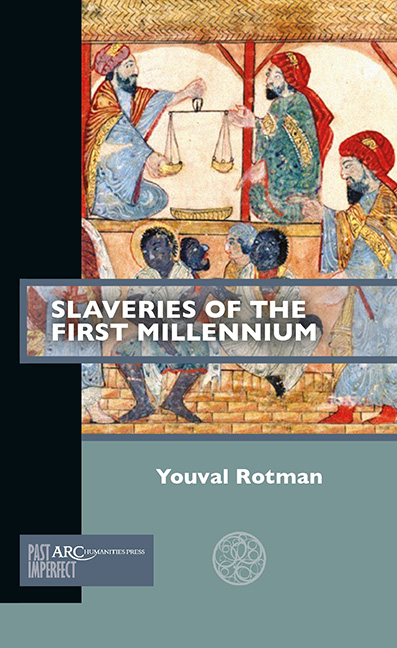Book contents
- Frontmatter
- Contents
- Introduction: Whence Slavery?
- Chapter 1 From Present to Past and Back
- Chapter 2 Slavery between Two Phenomena: Empire and Christianity
- Chapter 3 Enslavement, Captivity, and the Monotheistic Turn
- Chapter 4 New Polities, New Societies, New Economies
- Chapter 5 Migration, Integration, Connectivity
- Conclusion: Slavery as Historical Process— Towards a New Definition
- Further Reading
Chapter 1 - From Present to Past and Back
Published online by Cambridge University Press: 13 January 2022
- Frontmatter
- Contents
- Introduction: Whence Slavery?
- Chapter 1 From Present to Past and Back
- Chapter 2 Slavery between Two Phenomena: Empire and Christianity
- Chapter 3 Enslavement, Captivity, and the Monotheistic Turn
- Chapter 4 New Polities, New Societies, New Economies
- Chapter 5 Migration, Integration, Connectivity
- Conclusion: Slavery as Historical Process— Towards a New Definition
- Further Reading
Summary
Slavery has existed throughout history in different parts of the world and across different societies. Its exact definition is a matter of debate, as is the question of whether the entire range of historical and modern phenomena known as slavery can be narrowed down to a single definition. What is accepted, however, is the fact that throughout history societies have systematized the ownership and possession of human beings, their lives, and their labour within legal, social, economic, and cultural frameworks, and profited from their exploitation and trade. Although slavery does not exist legally in any of the member states of the United Nations today, reference to “contemporary forms of slavery” has become widespread over the last two decades. Different phenomena of human exploitation, bondage, trafficking, and commodifying, as well as de facto possessing of human beings are now termed “modern slavery.” This leads to a theoretical problem in studying the conditions that constitute slavery: what is the difference between defining it de jure and de facto? This question has troubled scholars of slavery, jurists, judges, and lawyers (Kotiswaran, Revisiting the Law).
Slavery was defined in the 1926 Convention of the League of Nations, which by 2013 had been ratified by ninety-nine states. Its first article defines slavery as follows: “(1) Slavery is the status or condition of a person over whom any or all of the powers attaching to the right of ownership are exercised. (2) The slave trade includes all acts involved in the capture, acquisition or disposal of a person with intent to reduce him to slavery; all acts involved in the acquisition of a slave with a view to selling or exchanging him; all acts of disposal by sale or exchange of a slave acquired with a view to being sold or exchanged, and, in general, every act of trade or transport in slaves.”
Slavery is defined de jure in most legal codes in modern states and is punishable. Facing a growing number of phe-nomena that are perceived as modern slavery, contemporary legal systems require criteria that will enable judges to decide whether a particular form of human exploitation, trafficking, possession, or merchandising has occurred and whether it falls under the legal definition of slavery and is therefore a crime. In other words, the main question is how to identify what I will term here as “de facto slavery.”
- Type
- Chapter
- Information
- Slaveries of the First Millennium , pp. 9 - 22Publisher: Amsterdam University PressPrint publication year: 2021

